Selection and installation of a hinge without a tie-in in the door
Traditional models of hinge installation are inconceivable without the operations of their insertion and subsequent installation. Not everyone has professional tools, and ordering specialized help may not be affordable. An alternative in this case is to install do-it-yourself door hinges without tie-in. The process itself is straightforward and involves the choice of material. Due to the originality of the design, such hinges can be used with standard door parameters.
Types of loops
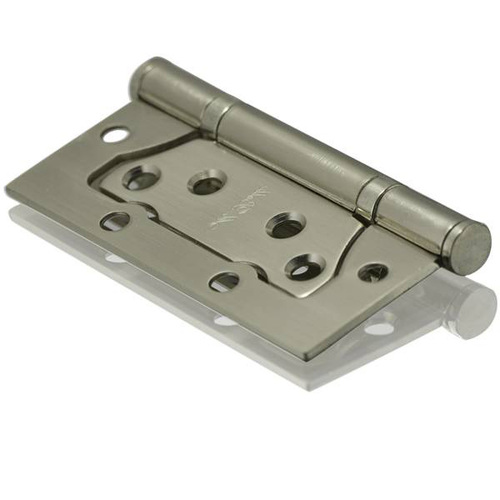
Simplified options for door fasteners are represented by the following types:
- invoices;
- card;
- screw-in.
Overhead - door hinges without tie-in, requiring only a screwdriver and self-tapping screws. A feature of the overhead hinges is their ease of installation - you should install them on the door leaf and on the frame beam, and then screw them on.
Hinges mounted without a tie-in and called card hinges have appeared on the construction market relatively recently. However, their popularity today is noticeable both among ordinary door buyers and repair professionals. The main advantage of card loops lies in the ease of attaching them to a wooden canvas.
Do not think that their positive aspects are compensated for by unreliability and a narrow range of applications. The manufacture of such hinges is associated with the use of the most modern and high-quality materials - brass alloys and stainless steel. Also located in each product ball bearings (from two to four) provide maximum smoothness of opening interior doors. Their other name is "butterflies", which appeared because of their external resemblance to the wings of an insect. This can be seen by looking at the photo. Overhead door hinges without tie-in have another variety. Its peculiarity is manifested in the use of hidden details.
Screw hinges are distinguished by the presence of special additional pins. With their help, the box and canvas are attached to the wooden parts. Having a sufficient length, they provide high reliability of the functioning of interior doors and are able to serve for many years. Installing screw hinges is just as easy as the aforementioned butterflies. Their feature was the invisibility in operation and the flexibility of debugging. The price, however, despite all the advantages, is relatively low. Screw hinges also do not require constant lubrication. When installing, you will only need to have an electric drill and self-tapping screws with you.
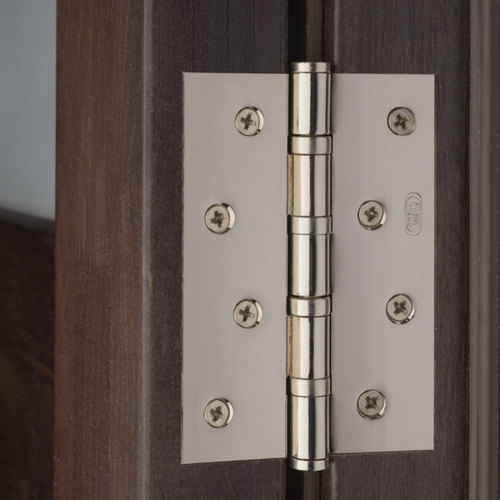
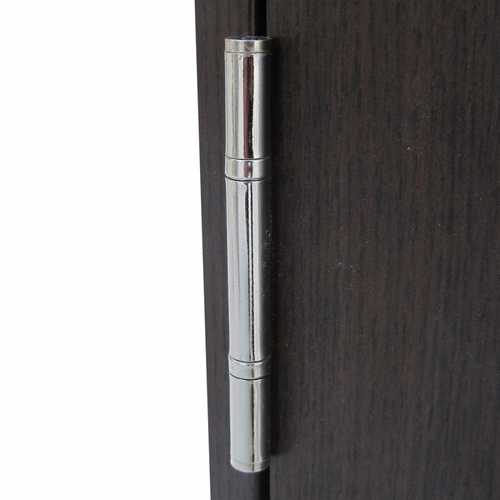
Nevertheless, a separate consideration requires a particularly popular type of loop today - a butterfly. Its performance and aesthetic characteristics have won the recognition of many professionals.
Butterfly hinges: installation steps
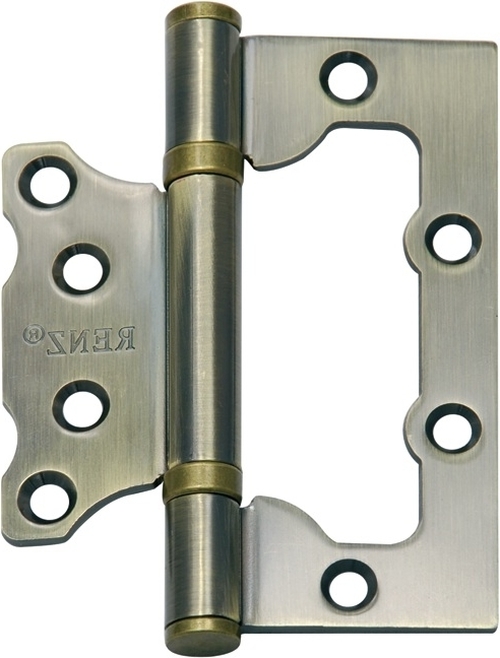
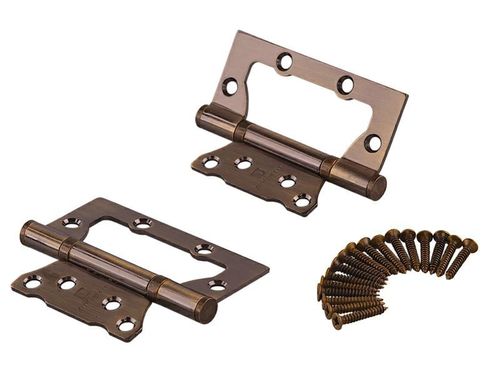
The ease of installation of butterflies lies in the absence of the need to make inserts on the door frame and the interior doors themselves. They are simply screwed with self-tapping screws in the right places.
So, the algorithm for installing butterfly loops includes the following steps:
- On the door ends we mark the places of future fasteners. The standard indent is 20 cm from the bottom and top edges of the canvas. Then you need to attach one of the wings of the "butterfly" to the end of the door. We put marks on the places where the self-tapping screws are screwed in, drill and, after attaching the loops, screw them with a screwdriver or drill.
- Then you need to insert the canvas into the door frame and mark the position of the "butterfly" on the vertical beam from the outside.
- Next, we disconnect the hinge from the door and, attaching it to the vertical jamb, leave traces for drilling holes. They need to be done with a small diameter self-tapping screw. At the final stage, we simply fasten the “butterfly” first to the door, and then put it on the box, attaching the outer plate to it. You can consider the work completed. The complete installation process of butterflies is shown in the video.
The universal loop without tie-in requires special attention. Its device provides the most efficient use of standard door construction.
Mounting specifics
Among the features of the installation it is worth highlighting:
- No need for carpentry work with the door leaf. Installing a hinge without a tie-in is accompanied only by accurate measurements and accurate fastening of parts.
- Saving time.
- A small number of tools used for installation, complemented by the cheapness of the process itself.
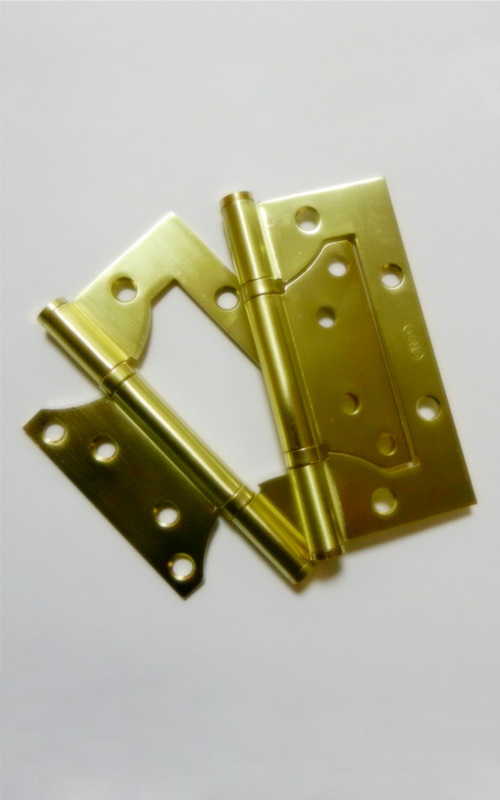
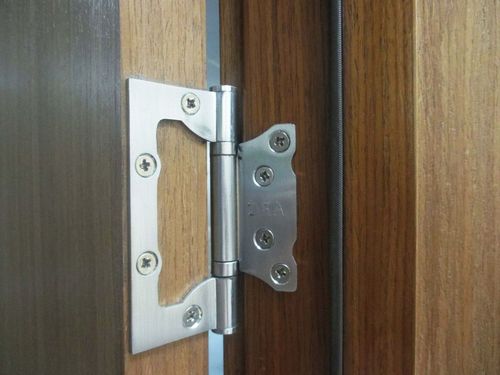
The main part of the tips for installing interior doors comes down to the accuracy of markings and the correct selection of material. As already mentioned, modern hinges for doors without a tie-in have become deservedly popular due to the possession of many useful characteristics. To some extent, they can be called irreplaceable. Despite the fact that all the above advantages of hinges without tie-in speak for themselves, it is worth recalling some of the nuances of their installation.
In case of a loose fit of the outer plate to the end of the door, a strip of cardboard should be placed under the “wing”. In this case, this is necessary, otherwise the entire structure will lose its geometry over time. Door hinges for interior doors without cut-in are effectively combined with light laminated and veneered products. In this case, the process of attaching such specimens is as safe as possible for their surface. The appearance of doors installed on overhead hinges without tie-in does not suffer at all. In addition, the quality of their subsequent operation remains excellent.
